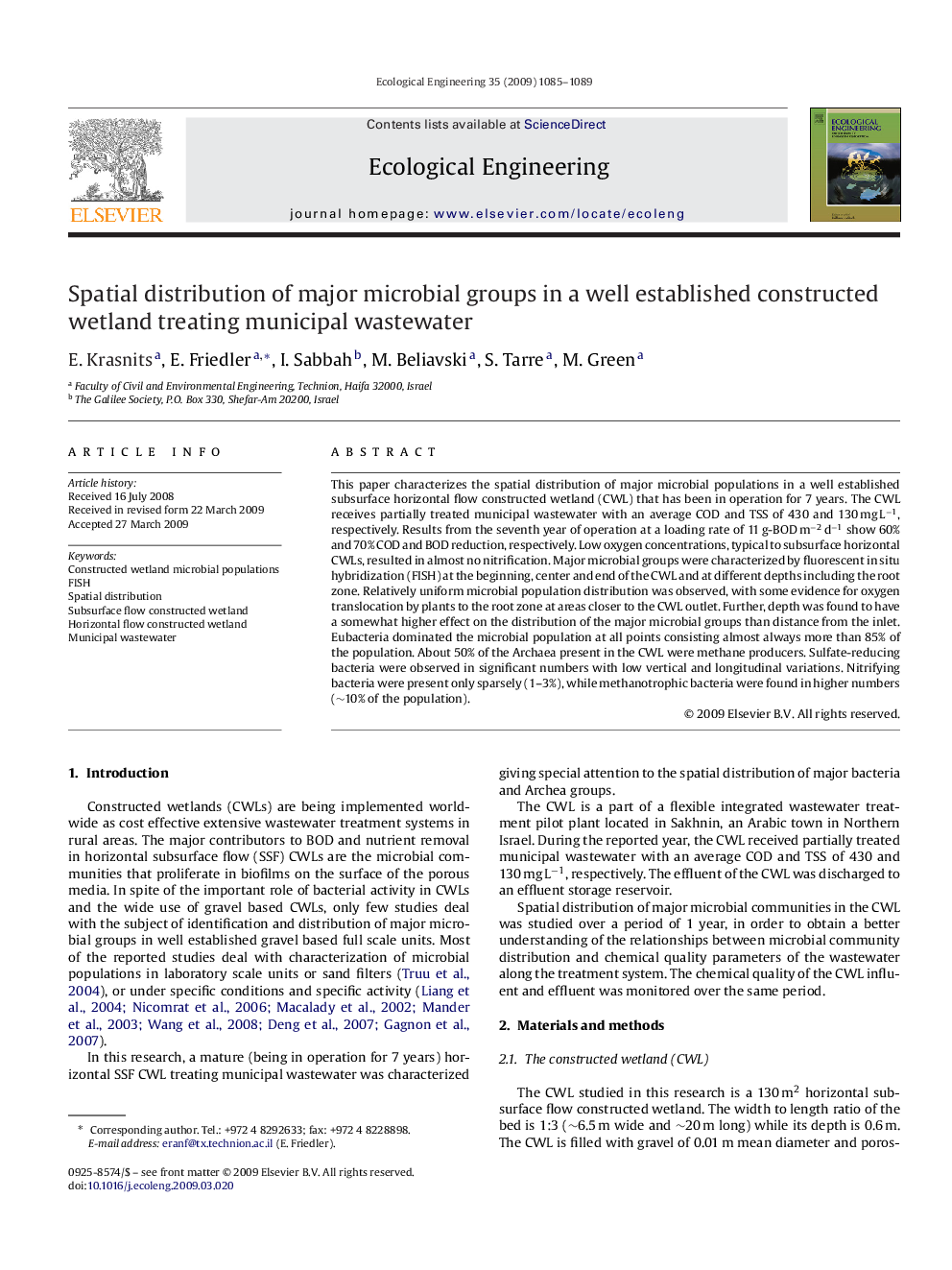| Article ID | Journal | Published Year | Pages | File Type |
|---|---|---|---|---|
| 4390887 | Ecological Engineering | 2009 | 5 Pages |
This paper characterizes the spatial distribution of major microbial populations in a well established subsurface horizontal flow constructed wetland (CWL) that has been in operation for 7 years. The CWL receives partially treated municipal wastewater with an average COD and TSS of 430 and 130 mg L−1, respectively. Results from the seventh year of operation at a loading rate of 11 g-BOD m−2 d−1 show 60% and 70% COD and BOD reduction, respectively. Low oxygen concentrations, typical to subsurface horizontal CWLs, resulted in almost no nitrification. Major microbial groups were characterized by fluorescent in situ hybridization (FISH) at the beginning, center and end of the CWL and at different depths including the root zone. Relatively uniform microbial population distribution was observed, with some evidence for oxygen translocation by plants to the root zone at areas closer to the CWL outlet. Further, depth was found to have a somewhat higher effect on the distribution of the major microbial groups than distance from the inlet. Eubacteria dominated the microbial population at all points consisting almost always more than 85% of the population. About 50% of the Archaea present in the CWL were methane producers. Sulfate-reducing bacteria were observed in significant numbers with low vertical and longitudinal variations. Nitrifying bacteria were present only sparsely (1–3%), while methanotrophic bacteria were found in higher numbers (∼10% of the population).
